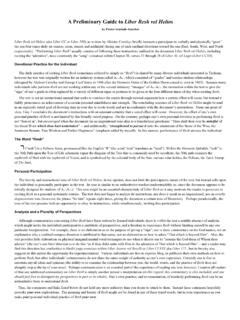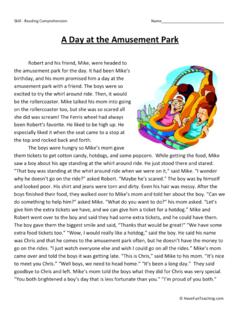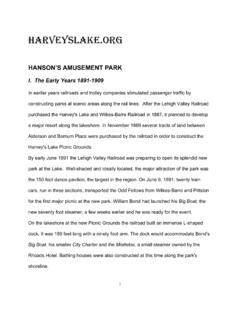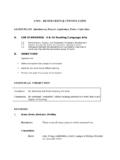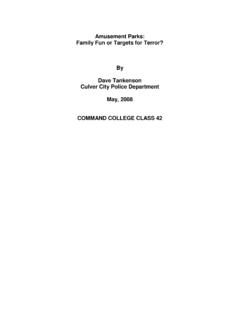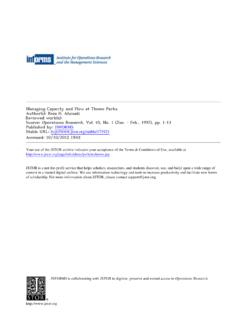Transcription of M.A.P.I. Lake Shawnee Amusement Park Investigation
1 1 lake Shawnee Amusement park Investigation Date of Investigation : 10 & 11 November 2007 Sunset on the 10th: 5:18 pm Moon Phase: Waxing crescent with 1% of the Moon's visible disk illuminated. Sunrise on the 11th: 6:59 am Attendees: Lee Jade Mark Harris Joe Heather Jaxon Ron Rick Location: US 19 & WV 10, Princeton, WV 24740 Halfway between Princeton and Spanishburg, travelers can see the rusty tower of a Ferris wheel. 2 History: At least two American Indian settlement sites are believed to lie on the tract. Professors and students from Marshall and Concord universities partially excavated one of them in 1988. They determined the settlement to have been a circular, fortress-like village surrounded by tree trunks anchored upright in the earth. The 100-yard-diameter interior of the fortress contained a central plaza and a number of circular wooden huts with mud and thatch roofs.
2 Of the 13 skeletons found at the village during the 1988 survey, all but one belonged to an infant or toddler. lake Shawnee s current owner, Gaylord White, said subsequent surveys have produced evidence indicating that a field on his tract may contain as many as 3,000 American Indian burials. Recreation of a Fort Ancient Village The Fort Ancient peoples lived along streams in southern Ohio, northern Kentucky, southeastern Indiana, and western West Virginia. Fort Ancient villages were located along terraces that overlooked rivers and sometimes were located on flood plains. Houses were arranged in a broad circle/oval shape around a public plaza. During the Early and Middle Fort Ancient period the houses were designed as single-family dwellings; however, after 1450 they became large multi-family dwellings.
3 All houses were constructed so that the each faced the central plaza. The plaza was the center of village life and was a place where ceremonies, games, and other social events were held. Later Fort Ancient villages were enclosed by stockades. The addition of the stockades suggests an increase in the level of conflict; this could also account for the break down of the Fort Ancient culture. 3 A map of a Fort Ancient village site Indians apparently abandoned the Fort Ancient-era village about 200 years before Mercer County s first European settler, Mitchell Clay, arrived on the same stretch of the Bluestone in 1775. One day in 1783 while the men were away hunting, Indians rode down from the ridge and killed and began to scalp one of the boys who was working in the fields. When his sister came to his aid, the Indian killed her too.
4 The Indian kidnapped another boy, Ezekiel Clay. A posse followed but the Indians split into two groups. The men followed them into Boone County and killed several Indians before realizing the Clay boy was not there. After they backtracked and pursued the second band who had fled to Ohio, they arrived only moments after the third child had been burned. (See full accounting of the story below.) Snidow opened the lake Shawnee Amusement park in 1926 and operated it until 1966. In addition to dozens of carnival rides, the park featured a spring-fed swimming pool the biggest one in this part of the state as well as log cabins, a row of concessions stands, a quarter-mile racetrack and occasional Wild West shows. White worked at the park in the 1950s as a youth, before moving to Ohio for a factory job after high school.
5 He eventually returned to Mercer County and bought the long-vacant Amusement park grounds in 1985, planning to use the acreage as the site for a residential development. As he began examining housing locations on the property, all kinds of Indian artifacts and graves started turning up, he said, and development plans went on hold. While White shelved residential development plans, he reopened lake Shawnee Amusement park in 1985, offering more than 30 rides, including a small roller coaster. Bumper-boat and paddleboat rides were also available. Insurance woes prompted White to close the Amusement park three years later. He now operates a pay-to-fish lake on the property, open on Saturdays May through September. 4 Clay Family Massacre: In 1774, Mitchell Clay acquired land at Clover Bottoms of Bluestone River, upstream from "the Bluestone settlement," and moved his family there in 1775.
6 In 1778, the Indians wiped out "the Bluestone settlement" on their way to attack the settlers along New River. Families of the settlement are unknown. The Indians did not bother the Clay family, as it was not in their path to New River and, perhaps, they did not know that Clay had settled there in 1775. Mitchell clay and his wife had fourteen children, seven sons and seven daughters. The sons were Mitchell, Henry, Charles, William, David, Bartley, and Ezekiel. The daughters were Rebecca, Patience, Sallie, Obedience, Nannie, Mary, and Tabitha. In 1781, after the summer work was complete and before time for the fall hunt, probably mid-September, a neighbor, probably James Moore of Abb's Valley, and Mitchell went to buy salt in preparation for the fall hunt, leaving his sons to look out for the family, and to fence the wheat stacks so that the livestock could be turned into the field for late pasture.
7 The older son, David, had left home at the time, and as no signs of Indians had been seen in the area, sons Charles and Mitchell Jr. decided that it was safe to go hunting, leaving Bartley and Ezekiel to fence the wheat stacks. Feeling safe, Phoebe started the day's activities, sending Tabitha down to the river to wash clothes with some of the bigger children, while the older sister, Rebecca, was in the house with the normal household chores and the younger daughter, Obedience, was in the yard tending to the smaller children and helping her mother. Unknown to the Clay family, an Indian had been watching the house for several days from the top of the ridge across the river, while the Indians, in two parties, were hunting for horses to steal, one party on the Guyandotte and the other in Abb's Valley.
8 Watching the normal activities at the Clay house was the Indians method of knowing that their presence had not been detected, as anyone from either Abb's Valley or the Guyandotte going for help from the New River settlement would pass this way. The unsuccessful party in Abb's Valley had returned the night before and camped across the river from the Clay house, unseen due to the trees and brush along the river. The spy on the ridge had seen Mitchell and James Moore leave in one direction, and the two older boys then leave in the opposite direction when Bartley and Ezekiel went to fence the wheat stacks before joining the party at the river, but had not seen Tabitha and the children come down to the river directly opposite where they were camped. 5 The Indians decided to take scalps or captives of Bartley and Ezekiel, so they moved down the north side of the river to cross, then back up the river bank even with the boys still not seeing Tabitha and the children.
9 Tabitha, hearing the shot, started running with the children toward the house. The Indians having surrounded Ezekiel, saw Tabitha and the children, and two of them attempted to capture Tabitha while others tried to catch the children. Tabitha fought off the Indians while the children were climbing the hill to the house. Unknown to the Indians, Mr. Blankenship was on his way back to New River from a visit to a more remote settlement and had stopped by the Clay house at the time, and was in the yard talking with Phoebe, who asked him to shoot the Indian fighting with Tabitha. Mr. Blankenship would not shoot, knowing that he might hit Tabitha instead, and if he did kill the Indian, he could not save her from the other, and an empty gun would cause a rush on the house. He held the Indians at bay with his loaded gun until Phoebe and Obedience had all of the children into the safety of the house.
10 After the Indians had taken the scalps and captive, they retreated to the river bank, and Mr. Blankenship told Phoebe that he would attempt to draw the Indians away from the house and go for help, so she and the children could get away undetected to James Bailey's on Brush Creek by going over Black Oak Mountain. He then left the house, first stopping by the body of Tabitha, then went on to the body of Bartley some three hundred yards from the house toward the settlement. The Indians, thinking he had gone to recover the bodies, moved upstream to intercept him on his return to the house about the same distance the path was from the river. With this extra head start, he then started running toward the settlement, the Indians giving chase, until he was some distance from the house. When he needed to rest, he would leave the trail and go some distance along the trail, thus causing the Indians to hunt for his hiding place where they saw him leave, thus giving him time to rest.




